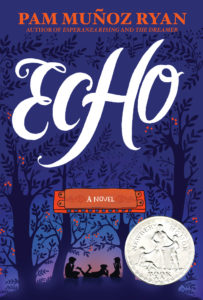“The Lioness in Winter: Writing an Old Woman’s Life”
Ann Burack-Weiss’s The Lioness in Winter: Writing an Old Woman’s Life is a slim volume where she explores through women writer’s prose what it means to them getting old. For decades she herself has been a social work practitioner who focused from day one of her career on the caregiving of the elderly. It was unusual when she chose this vocation in the 1960s but four decades later it is not. ” I became a social worker with the aged because I was afraid for my life.” It gives her a perspective and an understanding in a particular phase of a woman’s life when she is inevitably relegated to grandparent duties whereas continuity theory states that as people age they do not change their patterns of thought or action but continue to approach life in the same way as they always have.
Ann Burack-Weiss has been fascinated with the memoir/ autobiography or the essentials of life-writing experience. It encompasses a range of forms such as the transcribed interview, dictation, journal, letter and auto-fiction. According to her since the 1960s feminist scholars have been explored the woman’s “agency” ( the ability to speak and act on her own behalf) or the lack thereof. “They note that, through the ages, most of the writing about women, in fiction and nonfiction, has been by men, and that the male lens inevitably leads to distortion.” But as she discovers that many of her quoted authors in the book — Colette, Fisher, Sarton, Florida Scott-Maxwell– had published compelling life writing well before the editors determined what was worthy of inclusion in their collections. “The only possible explanation for their exclusion is that the editors themselves had little interest in what the old women had to say.”
The writers included in this book are categorised according to arbitrary time divisions:
1862-1909 (Fin de Siecle) — Colette, Simone de Beauvoir, M.F.K. Fisher, Anai Nin, Florida Scott-Maxwell, Eudora Welty, Edith Wharton
1910-1929 (Progressive Era) — Diana Athill, Maya Angelou, Marguerite Duras, Marilyn French, Doris Grumbach, Carolyn G. Heilbrun, Madeline L’Engle, Gerda Lerner, Doris Lessing, Adrienne Rich, May Sarton
1930-1943 (Great Depression- World War II) — Isabel Allende, Mary Catherine Bateson, Joan Didion, Margaret Drabble, Annie Ernaux, Vivian Gornick, Toni Morrison, Joyce Carol Oates, Edna O’Brien, Mary Oliver, Marge Piercy, Anne Ropihe, Lynne Sharon Schwartz, Alix Kates Shulman
1944-1960 (Baby Boomers) — Diane Ackerman, Alison Bechdel, Terry Castle, Mary Gordon, Kay Redfield Jamison, Nancy Mairs, Nancy K. Miller, Alice Walker
It is interesting Ann Burack-Weiss chooses to quote Toni Morrison’s Nobel Prize for Literature ( 2002) acceptance speech where Morrison focuses on “word-work” and being an old woman. Toni Morrison’s last novel God Help the Child ( 2015) which began life as a memoir but transformed into a slim novel explores these very themes. It reflects upon the cycle of life from the perspective of an older writer. What truly struck me at the end of 2015 was that none of the “Best of 2015” lists included this novel even though it was “Toni Morrison”. Perhaps old age is too stark a reminder of one’s mortality.
It is a slim volume but gives one much to think about.
Ann Burack-Weiss The Lioness in Winter: Writing an Old Woman’s Life Columbia University Press, New York, 2015. Pb. pp.190
27 Sept 2017

